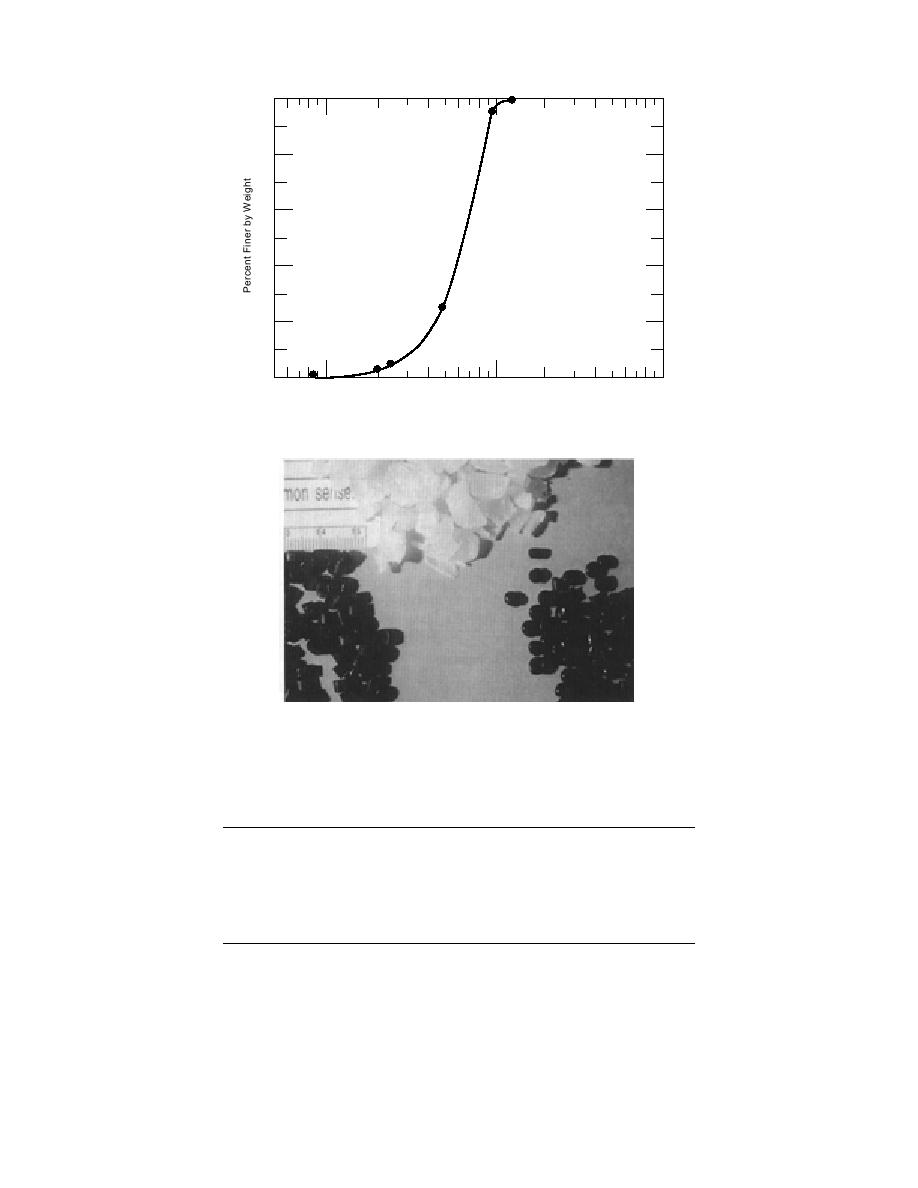
100
80
60
40
20
0
1.0
10
100
Diameter (mm)
Figure 7. Size gradation of fractured polypropylene model ice material.
Figure 8. Model ice materials. Top: NYPA ice (polypropy-
lene). Bottom left: CRREL beads (polyethylene). Bottom right:
Iowa beads (polypropylene).
Table 2. Physical characteristics of plastic model ice particulates.
Characteristic
Iowa beads
CRREL beads
NYPA ice
Shape
Rods and discs
Squashed cylinders Angular
Size
D = 3 mm
L = D = 34 mm D50 = 6 mm
Angle of internal friction, φ
27
34
46
Passive failure coefficient, k1
2.66
3.54
6.13
Coefficient of lateral pressure, k0
0.55
0.44
0.28
Static friction coefficient, ξ
0.5
0.67
1.0
Overall,
0.73
1.04
1.78
Weakened ice
ing and developing breakable model ice materials.
Most weakened ices are thermally grown. The
An aim of that work has been to produce a model
weakening additives are included in the solution
ice that will facilitate small-scale modeling of large
from which the ice is grown, or are added to (e.g.,
structures, vessels, and ships. To date, severe scale
sprayed or sprinkled on) the ice as it grows. Two
limitations have required the use of large and very
other weakening techniques are also used. One
expensive refrigerated laboratories to accommo-
entails weakening by warming to reduce the
date such modeling.
11



 Previous Page
Previous Page
